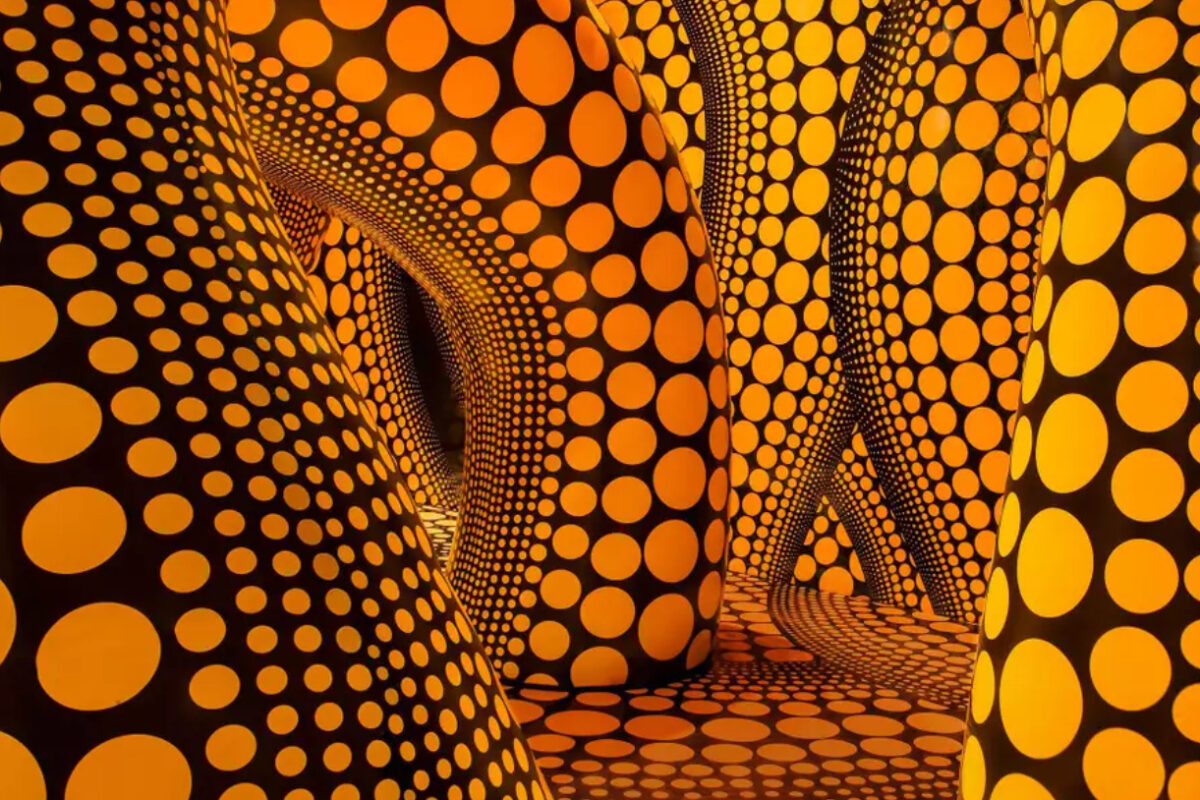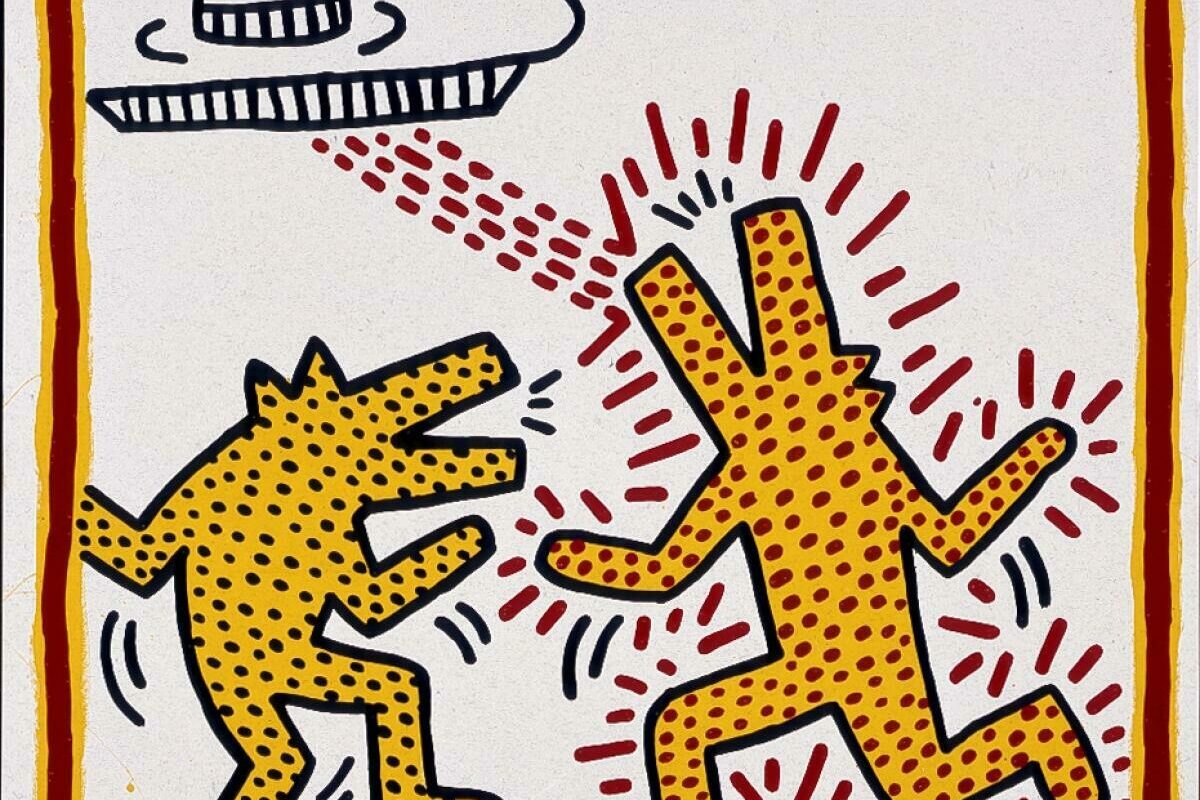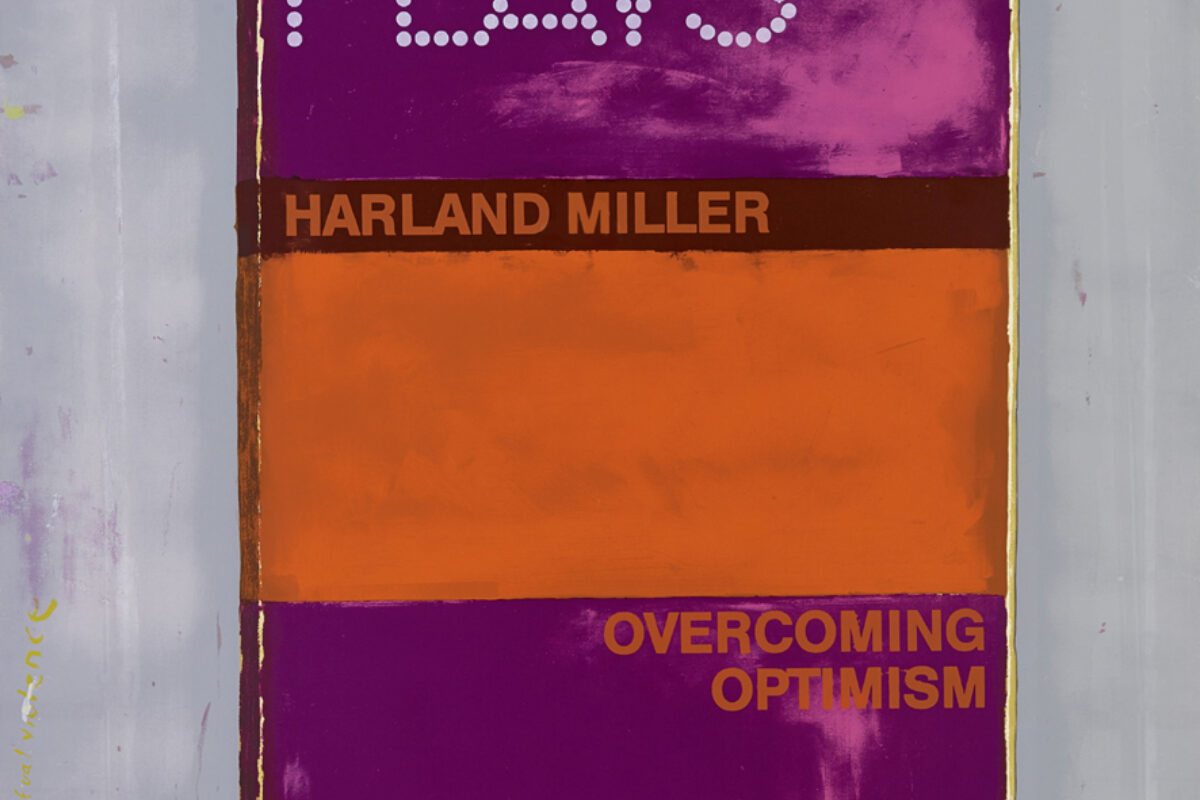Yayoi Kusama’s work is often described as whimsical, kaleidoscopic, and Instagrammable, yet beneath the colourful surfaces lies a profound psychological narrative. From hallucinations to healing, repetition to self-erasure, Kusama’s visual world is a mirror of her internal one. Here we explore the psychological undercurrents of her art, revealing how personal trauma became a launchpad for artistic expression.
Polka Dots as a Language of Healing
For Kusama, polka dots are far more than aesthetic, they are a coping mechanism and a visual diary. Since childhood, she’s described experiencing vivid hallucinations in which her environment was overtaken by repeating patterns, particularly dots. Rather than succumbing to fear, she made them her signature. Her dots are a way of reclaiming power over a disordered mind, a means to map and contain the chaos. In her own words, “a polka dot has the form of the sun, which is a symbol of the energy of the whole world.” Through dots, Kusama speaks a language of healing, turning her psychological fragmentation into immersive unity.

Yayoi Kusama, Dots
Infinity Rooms and the Death of the Ego
Kusama’s Infinity Mirror Rooms are often experienced as mesmerising spectacles, but they are, in essence, exercises in ego death. By reflecting endless versions of the self, these installations dissolve boundaries between subject and space. There is no fixed point to anchor identity, you are everywhere and nowhere at once. Kusama has long explored the idea of “self-obliteration,” a process where individual identity dissolves into the larger cosmos. The rooms aren’t about narcissism, they’re about release. In a time where selfhood is constantly projected and commodified, Kusama offers a radical alternative: let go.

Yayoi Kusama, Infinity Room
Repetition and Obsession
Repetition in Kusama’s work isn’t just decorative, but devotional. Whether it’s hundreds of painted dots, hand-sculpted phallic forms, or mirrored reflections, repetition becomes a trance state, a visual mantra. It speaks to obsession, a theme at the core of Kusama’s practice, but also to control. In a life punctuated by psychological instability, repetition becomes a method of grounding, of reclaiming autonomy. Each motif, endlessly reiterated, creates a rhythm that is both meditative and unsettling, mirroring the tension between compulsion and calm that defines her psychological world.

Yayoi Kusama, Infinity Nets
Immersion and the Female Gaze
Kusama’s installations subvert traditional dynamics of seeing and being seen. Unlike the male-dominated history of art, where the viewer holds the power, Kusama places the viewer within the artwork and within her mind. These immersive environments are not passive spectacles but active psychological spaces. Visitors don’t just look at art; they dissolve into it. This shift away from objectification allows for an embodied experience that aligns more with the female gaze: introspective, cyclical, and relational. Kusama doesn’t invite you to consume her art, she asks you to feel it.

Yayoi Kusama, Infinity Room “Let’s Survive Forever”
In Kusama’s universe, psychology isn’t hidden beneath the surface, it is the surface. Her work doesn’t simply reflect the mind; it replicates its loops, anxieties, and transcendence. As she continues to invite audiences into her world, we’re reminded that art can be both a mirror and a salve, not just for the artist, but for all of us seeking meaning in the infinite.

Madeleine White
Senior Sales and Acquisitions
More editorials about Yayoi Kusama
Artists
The Diverse Techniques of Yayoi Kusama
21 Aug 2025 | 2 min read

Artists
The Psychology of Kusama
14 Jul 2025 | 3 min read

Artists
Yayoi Kusama breaks records with the most successful exhibition in Australian history
17 Apr 2025

Artists
Yayoi Kusama at 96: A Celebration of the World's Best-Selling Female Artist
22 Mar 2025 | 3 min read

Artists
Hang-Up's Top Exhibitions of 2024
23 Dec 2024 | 5 min read

Artists
10 Facts About Yayoi Kusama
30 Nov 2024 | 9 min read
Exhibitions
Yayoi Kusama at Victoria Miro
21 Oct 2024
Artists
Food Meets Art
7 Aug 2023 | 4 min read
Art Market
Art Market Insight | What, Why and How To Invest
19 Jul 2022
More from Artists
Artists
The Diverse Techniques of Yayoi Kusama
21 Aug 2025 | 2 min read

Artists
Haring Decoded: The Symbolism of His Iconic Dog
12 Aug 2025 | 2 min read

Artists
Happy Birthday Andy Warhol, The King of Pop Art
6 Aug 2025

Artists
The Psychology of Kusama
14 Jul 2025 | 3 min read

Artists
From Rothko to Ruscha: Unpacking Harland Miller’s Influences
10 Jul 2025 | 3 min read

Artists
Decoded: David Shrigley
8 Jul 2025 | 2 min read

Artists
Is David Hockney the Most Important Living Artist?
2 Jul 2025

Artists
Top 10 Selling Warhol Sets
15 Jun 2025 | 2 min read

Artists
David Hockney | 5 Groundbreaking Moments
23 Apr 2025 | 3 min read


